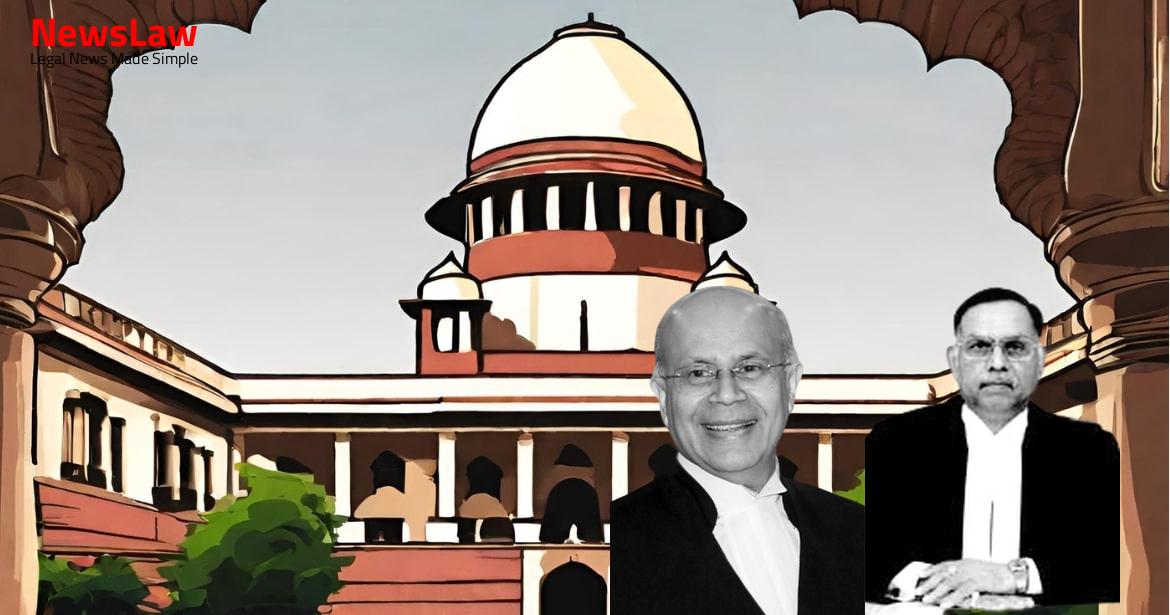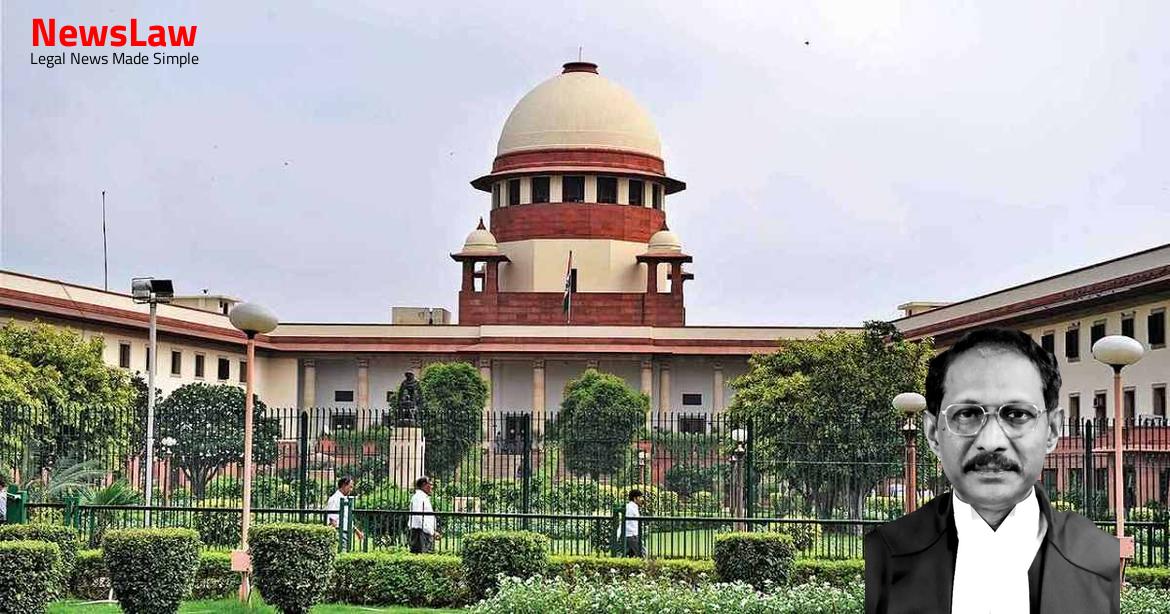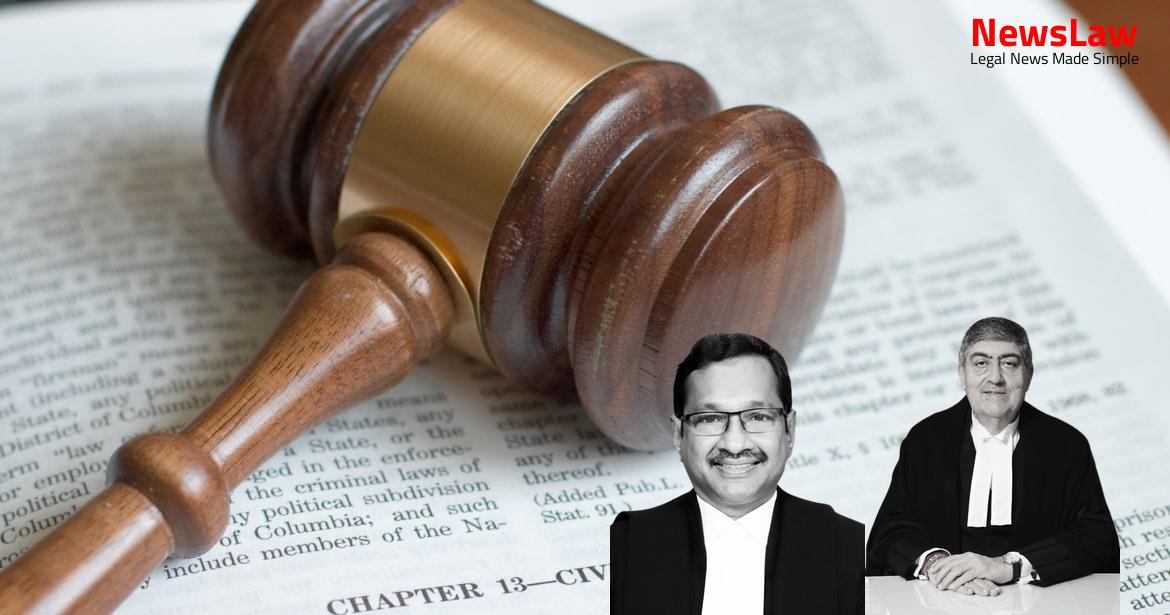A significant legal case regarding the selection of Sajjadah Nashin and Mutawalli unfolded in the Supreme Court. The case involved a dispute over inheritance rights, with a key focus on the eligibility criteria for the role. The judgment sheds light on the interpretation of the Zabta rules and the importance of lineage in the appointment process. Dive into the details of this intriguing case to understand the complexities of succession within the spiritual Sect ‘Silsila’.
Facts
- Suit No.96 of 1982 filed by Gulam Sarwar Sahib was decreed by the trial court granting permanent injunction.
- Suit No.59 of 1986 filed by Gulam Naseer was decreed by the trial court.
- High Court of Rajasthan at Jaipur Bench dismissed three Second Appeals filed by Gulam Sarwar Sahib against the judgments of the lower courts.
- Nurul Hasan registered the Dargah in the Muslim Wakf Board of Rajasthan and submitted the Zabta at the time of registration.
- After the death of Nurul Hasan, a disturbance in the Dargah management led to Suit No.96 of 1982 being filed by Gulam Sarwar Sahib through his guardian.
- Fourth Sajjadah Nashin and Mutawalli, Nurul Hasan, nominated Gulam Naseer as his successor through a Will executed on 12.09.1979.
- SLP(C)No.14030 of 1989 filed against the judgment of the High Court was dismissed.
- Another Suit No.12 of 1989 was filed by Gulam Sarwar Sahib seeking permanent injunction against Gulam Naseer and others.
- Appellant filed three appeals against the trial court judgment dated 17.04.2003
- First Appellate Court dismissed the appeals on 04.09.2004
- Trial court declared Original Name as eligible to be nominated as Sajjadah Nashin and Mutawalli
- Interim injunction granted by trial court was initially set aside by Appellate Court, restored by High Court on 28.10.1988
- Appellant filed three second appeals against the First Appellate Court judgment dated 04.09.2004
- High Court dismissed the second appeals on 05.07.2012
Arguments
- The appellant, Nurul Hasan’s brother, claims to be eligible for the position of Sajjadah Nashin and Mutawalli based on being from the family of the founder.
- The appellant’s argument is supported by the Zabta rules, specifically Rule 1 and Rule 2, which mention the Sajjadah Nashin and Mutawalli must be from the family.
- The appellant argues that the term ‘Khandan’ used in the Zabta refers to a specific spiritual Sect and that he falls within this category.
- The appellant’s counsel emphasizes that the appellant’s position was accepted by the Murids, reinforcing his claim to the role.
- The courts below are criticized for not appointing the appellant as Sajjadah Nashin and Mutawalli and for wrongly considering the respondent, Nurul Hasan’s daughter’s son, as eligible for the position.
- The respondent’s ineligibility is based on being the daughter’s son of a Sajjadah Nashin and Mutawalli, who nominated him, arguing he is not a son as a lineal descendant.
- The trial court framed several issues in suits, which were decided upon.
- The interpretation of ‘Sagir Sinn’ in Rule 2 of Zabta is contested, stating it was wrongly translated as ‘minor son’.
- The word ‘Sinn’ in Persian means ‘age, year’, not ‘son’ as interpreted. ‘Sagir Sinn’ in Zabta meant any person of minor age can be declared a successor.
- The argument raised is the alleged misinterpretation of Zabta by the lower courts.
- The appellant claims the nominated person for Sajjadah Nashin and Mutawalli must be from the founder’s family and a lineal descendant.
Also Read: Dispensation with Personal Appearance in Criminal Case: Landmark Judgement by Supreme Court of India
Analysis
- The descendant of Hazi Najmuddin or Maulana Naseerudin is not excluded from being chosen as Sajjadah Nashin and Mutawalli.
- The respondent, a descendant of 4 Sajjadah Nashin and Mutawalli, and traced lineage from Shahabuddin, is considered to belong to the ‘Khandan’.
- The right of Sajjadah Nashin to select his successor holds weight in the nomination process.
- All three Courts correctly interpreted the Zabta and ruled the respondent eligible for nomination as Sajjadah Nashin and Mutawalli.
- The Zabta does not restrict succession to lineal descendants of Hazi Najmuddin or Maulana Naseerudin, but rather emphasizes a trained person from the ‘Khandan’.
- The term ‘Sagir Sinn’ does not strictly mean ‘minor son’ but refers to a younger age or period of life.
- The Zabta’s usage of ‘Sulemani Sect’ and ‘Silsila’ indicates a non-hereditary succession to the office.
- The selection of Sajjadah Nashin and Mutawalli is based on qualities and customs prevalent in the Dargah since inception.
- The word ‘Khandan’ in this context does not mean strict family succession but rather refers to the spiritual Sect ‘Silsila’.
- The Zabta does not clearly establish a line of succession through lineal descendants of the founder.
- The Hindi translation of Urdu words supports the interpretation that ‘Sagir Sinn’ does not mean ‘minor son’.
- It shall be obligatory upon the Sajjadah Nashin and Mutawalli to select his successor during his lifetime.
- The successor should be selected based on the conditions prescribed in the specified lines.
- This selection is crucial to prevent any faction or dispute after the current Sajjadah’s passing.
- If the Sahib-e-Sajjadah dies before selecting a successor, the responsibility falls on the Sajjadah Nashin and Mutawalli to make the selection.
- The appeals are dismissed without merit.
- No specific points or arguments raised in the appeals were found valid.
- The decision remains unchanged as there is no merit in the appeals.
Also Read: Case of Unnatural Death in Matrimonial Home: Supreme Court Judgment
Case Title: PEER GULAM JILANI Vs. PEER GULAM NASEER
Case Number: C.A. No.-010770-010772 / 2013



